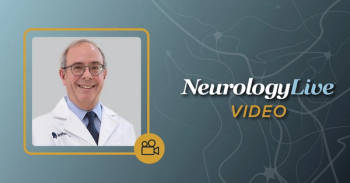
Sudden Unexpected Death in Epilepsy: When to Discuss
The possibility of SUDEP should serve as a powerful motivator for improved adherence and active attempts at seizure control with new medications, neurostimulation, and epilepsy surgery.
A recent editorial in the journal Epilepsia recommended that physicians discuss the difficult problem of sudden unexpected death in epilepsy (SUDEP) with all their patients who have epilepsy.1 SUDEP, defined as “sudden, unexpected, witnessed or unwitnessed, nontraumatic and nondrowning death in an individual with epilepsy, with or without evidence for a seizure and excluding documented status epilepticus where postmortem examination does not reveal a cause for death,”2 occurs in 1 in 150 person-years in persons with uncontrolled seizures3 and accounts for 15% to 20% of deaths in patients with epilepsy.4 Seizure-related cardiac or respiratory dysfunction is hypothesized as a cause, but no definite etiology has been identified.4
Awareness of SUDEP has increased in recent years among the public, clinicians, and researchers.5 A number of websites impart information on SUDEP, including
In 2009, the American Epilepsy Society and the Epilepsy Foundation Joint Task Force published an update on SUDEP.3 The report, observing that most neurologists surveyed discussed SUDEP with only a few of their patients, recommended that “information on SUDEP should be tailored to the individual’s relative risk of SUDEP and that information should be provided as part of a comprehensive counseling program.”3
Risk Factors
Many potential risk factors for SUDEP have been identified. These include antiepileptic drug polytherapy, being in bed, early age at onset, generalized tonic-clonic seizures, long duration of seizure disorder, male gender, nocturnal seizures, subtherapeutic antiepileptic drug levels, uncontrolled seizures, and young age.7
The most practical approach to decrease the risk of SUDEP is to eliminate seizures because SUDEP rarely occurs in patients with epilepsy who are seizure free. Awareness of SUDEP can serve as a powerful motivator for patients to increase medication adherence or to consider potentially curative epilepsy surgery and other strategies for seizure control.
Research
SUDEP has become an active research topic. Three clinical trials are currently recruiting patients (
Need for Discussion?
In their editorial in Epilepsia, Elizabeth Donner, MD, Director of the SickKids Comprehensive Epilepsy Program, Toronto, Canada, and Jeffrey Buchhalter, MD, Director of the Children’s Comprehensive Epilepsy Centre, Alberta Children’s Hospital, Alberta, Canada, recommended that clinicians discuss the possibility of SUDEP with all of their patients.1 The authors cited studies indicating that parents of children with epilepsy want to be informed of possible complications, such as SUDEP, and that most parents would like to learn of these at the time of their child’s diagnosis.
The advantages of such a discussion include engaging patients in their own care and helping them avoid misinformation about SUDEP. Although such a discussion may engender additional anxiety, the authors observed that because patients are likely to seek out SUDEP information on the Internet that may be inaccurate or misleading, clinicians initiating the discussion of such an important and sensitive topic is preferable.
However, because SUDEP will not develop in the vast majority of patients with epilepsy, it is unclear whether all patients with epilepsy should be educated on this risk, and if they are, whether the first visit is the appropriate time. In 1 survey, patients admitted to fear/anxiety/concern (40.5%), indifference (27.4%), and confusion (19.1%) after learning of SUDEP.8 Not all patients wanted to be told of the risk, and some wanted to be told only if they were at high risk.8 The editors of Epilepsia have posted a
Conclusions
SUDEP is an uncommon but tragic complication of epilepsy that primarily affects those with uncontrolled epilepsy. Genetic research may soon allow identification of patients at high risk. Currently, the only preventive method is seizure control. The possibility of SUDEP should serve as a powerful motivator for improved adherence and active attempts at seizure control with new medications, neurostimulation, and epilepsy surgery. Epilepsy experts Drs Donner and Buchhalter espouse educating all patients on the risk of SUDEP, but others may not agree.
What do you think?
References:
1. Donner E, Buchhalter J. Commentary: it’s time to talk about SUDEP. Epilepsia. 2014;55:1501-1503.
2. Nashef L, Ryvlin P. Sudden unexpected death in epilepsy (SUDEP): Update and reflections. Neurol Clin. 2009;27:1063-1074.
3. So EL, Bainbridge J, Buchhalter JR, et al. Report of the American Epilepsy Society and the Epilepsy Foundation joint task force on sudden unexplained death in epilepsy. Epilepsia. 2009;50:917-922.
4. Bagnall RD, Crompton DE, Cutmore C, et al. Genetic analysis of PHOX2B in sudden unexpected death in epilepsy cases. Neurology. 2014;83:1018-1021.
5. Mathern G, Nehlig A, Hesdorffer DC. SUDEP’s health burden and when to talk about it. Epilepsia. 2014;55:1477-1478.
6. Talan J. A teenager’s death turns spotlight on sudden unexplained death in epilepsy. Neurology Today. 2009;9:24.
7. Glascock E. Genomic biomarkers of SUDEP in brain and heart. Epilepsy and Behavior. 2013. DOI:
8. Kroner BL, Wright C, Friedman D, et al. Characteristics of epilepsy patients and caregivers who either have or have not heard of SUDEP. Epilepsia. 2014;55:1486-1494.
Newsletter
Keep your finger on the pulse of neurology—subscribe to NeurologyLive for expert interviews, new data, and breakthrough treatment updates.




























